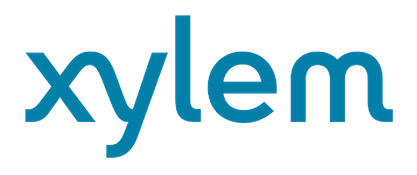
How Xylem Boosted Productivity with a Unified Global Pump Quoting Platform
The company
Global leader in sustainable water solutions
Xylem is a global leader in water technology, providing advanced solutions that move, treat, measure, and optimize water across industrial, commercial, and municipal applications. With operations in over 150 countries and more than 23,000 employees, Xylem’s portfolio spans water infrastructure, applied water, water solutions and services, and measurement and control systems, delivering intelligent, energy-efficient technologies that drive sustainability and performance across the full water cycle.

The Challenge
Fragmented systems slowed global sales
As a global pump manufacturer with thousands of product variants and regional systems, Xylem’s digital landscape was fragmented. More than 40 separate tools handled selection, configuration, pricing, and quoting across different regions and business units, leading to inconsistent processes, slow response times, and limited visibility between sales, service, and engineering. It was also difficult to present complete solution bundles that included pumps, accessories, and controls.
To move from product-driven manufacturing to solution-based selling, Xylem set out to create a unified, seamless buying experience for internal teams, partners, and customers. The company needed a modern digital foundation capable of centralizing CPQ and designed to connect with its customer-facing selection tools.

The Solution
One unified platform for smarter sales
Xylem partnered with Tacton to launch Xylem Solver, a new Select, Configure, Price, Quote (SCPQ) platform with CPQ capabilities powered by Tacton. Solver is a foundational step toward a fully integrated digital sales system that connects internal users, distributors, and customers in one environment. Tacton CPQ integrated with existing CRM and ERP systems to support real-time data visibility, improved collaboration, and simplified workflows.
- Unified SCPQ: A single source of truth connects product data, configuration rules, and pricing, integrated with Salesforce and ERP systems for real-time accuracy.
- Smart configuration: With constraint-based logic, every configuration is technically valid. Engineers can model curves, compare products, and even apply impeller trimming and lifecycle calculators within Solver.
- Dual experience design: An internal workflow for teams supports advanced collaboration, while the external interface for distributors and customers streamlines self-service pump selection and quotes.
- Enhanced visibility: Centralized project management capabilities let teams share configurations, track opportunities, and generate professional proposals within minutes.

The Impact
Enhanced productivity across the global portfolio
Since implementing Tacton, Xylem has realized measurable gains across adoption, productivity, and project efficiency.
- User volume increase: Xylem has more than tripled the number of users in Solver year-over-year.
- Greater deal productivity: Process simplification and automation reduced manual touchpoints by Customer Service, saving up to 1.5 hours per order at entry.
- Project volume increase: The company has nearly tripled the number of projects managed in Solver year-over-year.
- Increase in products in projects: The average number of products per project has grown by more than 50%, driving deeper engagement and cross-sell opportunities.

Looking Ahead
A platform for continued innovation
Xylem redefined how pumps are configured, priced, and quoted across its global operations. The company now delivers faster, more accurate proposals while equipping its teams and partners to sell complete, efficient, and sustainable solutions.

Key Takeaways
Lessons in pump manufacturing sales
Lead with strategy
Xylem’s success stemmed from aligning technology investments with a business vision, moving from product selling to customer problem-solving.
Build a foundation for growth
Tacton CPQ served as the digital backbone for future innovation, enabling Xylem to expand into selection and self-service capabilities without re-platforming.
Invest in data and change management
Unifying systems required strong governance, training, and data quality initiatives to ensure adoption and accuracy.